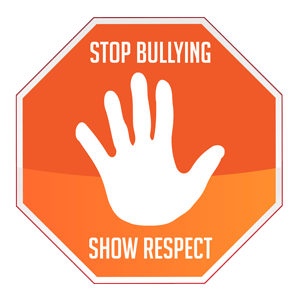
Suicide Prevention
The school board of Pasco County Schools recognizes that depression and self-destruction are problems of increasing severity among children and adolescents ( SB 5350 ) Suicide is a serious public health problem. While its causes are complex and determined by multiple factors, the goal of suicide prevention is simple: reduce factors that increase risk (i.e. risk factors) and increase factors that promote resilience (i.e. protective factors). Ideally, prevention addresses all levels of influence including individuals, families, school communities and society at large (Centers for Disease Control, September, 2019). Nearly 45,000 Americans die by suicide each year. The best way to prevent suicide is to recognize warning signs and know how to respond if you spot them.
Warning Signs can include:
- Threatening to hurt or kill themselves
- Increased alcohol and drug use
- Having rage, anger, or seeking revenge
- Social withdrawal from friends, family and the community
- Dramatic mood swings
- Talking, writing, or thinking about death
- Impulsive or reckless behavior
- Expressing hopelessness, no reason for living, or having no sense of purpose in life
Protective Factors
Protective factors are personal or environmental characteristics that help protect people from potential suicide.
Major protective factors for suicide include:
- Effective behavioral health care
- Connectedness to individuals, family, community, and social institutions
- Life skills (including problem-solving skills and coping skills, ability to adapt to change)
- Self-esteem and a sense of purpose or meaning in life
- Cultural, religious, or personal beliefs that discourage suicide
"Take any suicidal talk or behavior seriously. It's not just a warning sign that the person is thinking about suicide- it's a cry for help". Suicide Awareness Voices of Education
If you are concerned about yourself or someone else, call The National Suicide Prevention Lifeline at 1-800-TALK (8255) or call 911 immediately.
A suicide assessment occurs when a student expresses suicidal thoughts or is referred to a school-based mental health staff (School Counselor, School Social Worker, School Psychologist or School Nurse) with concerns for his or her safety. This includes verbal and/or written statements made at school, on social media, or in the community.
Suicide assessments will be conducted by school-based mental health staff. The Columbia Suicide Severity Rating Scale, also known as the Columbia Protocol, is used to determine the level of risk. The purpose of this assessment is to make recommendations for the safety and mental health support of the student. After a suicide assessment is completed, the parent or guardian will be notified.
If the suicide assessment indicates a high level of risk despite the use of de-escalation strategies, administration & student services will connect with the Mobile Response Team and law enforcement. MRT will support the team at the school with problem-solving student needs and determining the next steps. If the risk is such that a student’s well-being is in jeopardy, MRT and/or law enforcement will make the determination if an involuntary examination is warranted according to the Baker Act Florida Statute 394.463.
For more information about MRT -BayCare Mobile Response Team
School-Based Mental Health staff utilize the Columbia-Suicide Severity Rating Scale, a research-based suicide screening tool. A parent version of this tool mirroring the one used by School-Based Mental Health staff can be found below:
This screening tool should not be considered a replacement for clinical evaluation of suicide risk.
A Baker Act per Florida Statute 394.463 is an Involuntary Examination of a student or person must meet the following criteria:
Reason to believe a person has a mental illness and because of mental illness, the person has refused or is unable to determine if an examination is necessary, and either
Baker Act Involuntary Examination Criteria, Processes and Timeframes click here
- Without care or treatment, is likely to suffer from neglect or refuse care to self, and such neglect or refusal poses a real and present threat of substantial harm to one’s well-being and it is not apparent that such harm may be avoided through the help of willing family members, friends or the provision of other services: And/Or
- There is a substantial likelihood that without treatment the person will exhibit, in the near future, serious bodily harm to self or others, as evidenced by recent behavior
A safety plan is designed to guide your child through a mental health crisis. The purpose of a safety plan is to provide the support to prevent another mental health crisis, in the future. A member of the student services team from your child’s school can assist in developing a safety plan. If your child is receiving support from a mental health professional, that provder can assist in developing a safety plan, as well.
Resources for Suicide Prevention:
Tips for Parents and Educators
12 Things Parents Can Do To Prevent Suicide
Suicide Prevention Resource Center
American Foundation For Suicide Prevention
Resources Regarding Baker Act:
Florida Statute on Mental Health
Florida Department of Children and Families- Crisis Services- Baker Act
Baker Act User Reference Guide








